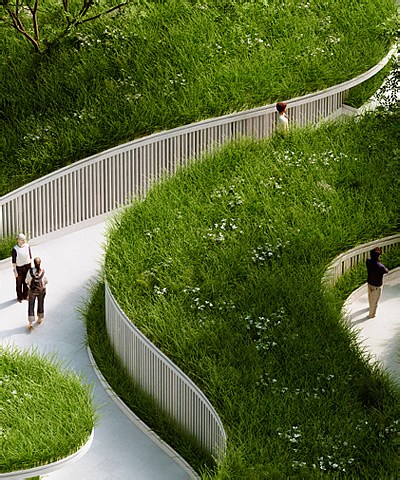地 · 景中的建筑 | UED百名建筑师展
2017-07-24
地景是有两层含义。一方面就是指自然的景观。另一方面,可以拆分成两个概念:地,包含非常丰富的含义
民生美术馆是基于一个80 年代的工业建筑改造而成。它以开放性、多元性、灵活性,对今天美术馆的封闭性、单一性及固定性提出了挑战,将会成为中国当代艺术的最大的公共平台。
Minsheng Contemporary Art Museum is a renovation of an old factory from the 1980s. Its openness, diversity, flexibility make it different from typical galleries, which are always monotonous and secluded. It will be the largest public dedicated exhibition space for Chinese contemporary art.
▼美术馆外观,external view

▼入口,entrance

快速的城市化,不仅为我们创造了物质文明的遗产,也为我们身后制造了大量的废弃物。我们喜新厌旧的心理,让众多老建筑遭到遗弃。798 地区的松下显像管厂已不再有过去近30 年的辉煌,遍体鳞伤,满目疮痍,虽然破旧,不美,但却透出工业建筑的粗犷,质朴与真实。这些特征恰和当代艺术的的态度不谋而合。民生现代美术馆的想法正是在这种基础上诞生,它尊重工业建筑朴素,真实的特质,顺势而为,无用之用,直指当代艺术空间的未来,挑战传统美术馆的冠冕堂皇。
The rapid urbanization brings us not only material civilization heritage, but also a huge amount of wastes. The propensity of love the new and loathe the old causes many old buildings being abandoned. The Panasonic factory at 798 area is devastated and ruined, but its rough, plain and real industrial building features happen to coincide with the attitude of contemporary art. The concept of Minsheng Contemporary Art Museum derives from the above, it respects the simplicity and reality of industrial buildings, aiming at the future of contemporary art space, challenging the high-sounding traditional art museum.
空间多元,替代“白立方”单一空间模式
与传统艺术相比,当代艺术的一个显著特征是其表现形式的多元,为了成就这种特征,民生现代美术馆不仅塑造了传统美术馆中5米净高的经典空间,更有大小不一,尺寸各异,层高显著不同的空间:大盒子,中盒子,小盒子,经典空间,院落展览空间,黑盒子(多功能表演,会议,展览空间)去应对不同艺术形式的需求。它们有机地组织在一个充满张力的中心空间周围,结合美术馆前装置公园,屋顶展览平台,中心院落等开放式展览空间,构成一组尺度不同,形态各异的空间组群。
1. diversity of spaces, replacing single space pattern of “white cube”
Comparing to traditional art, a distinguishing feature of contemporary art is the diversity form of representation. In order to facilitate this, Minsheng Contemporary Art Museum not only has the 5 meters clear height space of traditional art museum, but also has spaces of different sizes and dimensions: big box, middle box, small box, classic space, courtyard exhibition space, black box(multi-function performance, convention, exhibition spaces). They are organized organically by the central space full of tension, combining with open exhibition spaces such as installation park in front of the art museum, exhibition platform on the rooftop, and central courtyard, forming a group of spaces with different dimensions and shapes.
赫尔辛基,2013 8月12日
芬兰联邦总检察长
里斯托·锡皮拉 芬兰律师协会会长,律师


